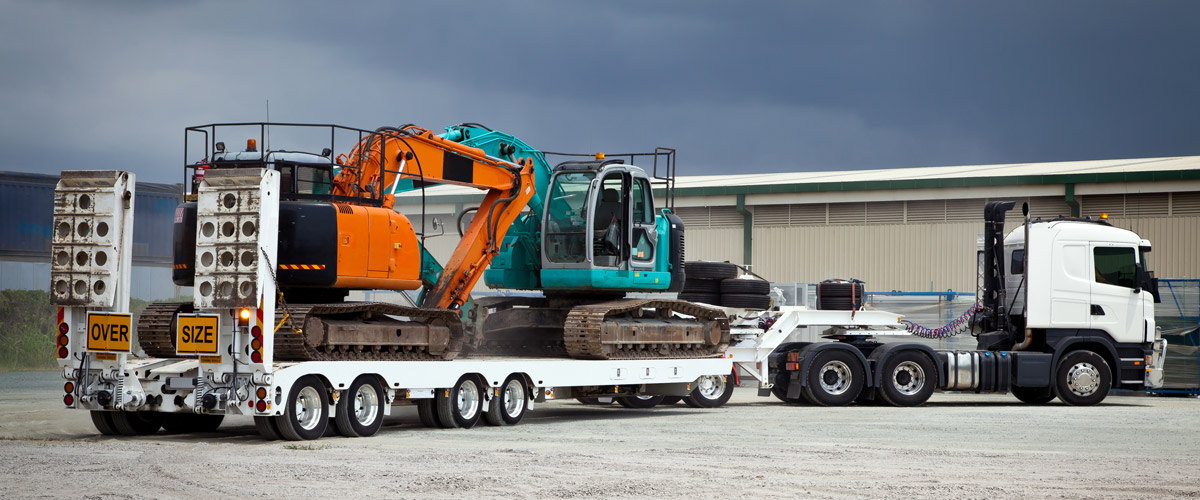Heavy Vehicle Guide for Construction Work
Last year SafeWork Australia released a newguidefor the construction industry to reduce the risk of traffic accidents and fatalities caused by...

In 2020, Transport for NSW released their recommendations for safety technologies for heavy vehicles on NSW roads and working on government projects. The 34-page NSW Safety Guide for Heavy Vehicles is still current today.
The recommendations were developed because NSW government consider heavy vehicle safety a serious issue. While heavy vehicles make up 2.5% of NSW road fleet and 8.3% of kilometres travelled, they are involved in approx. 18% of all road fatalities. This is to not to say they are always the “at fault” vehicle, but their size and mass make any crash a serious one.
The recommendations for 57 safety technologies fall into 3 areas:
Several of these safety requirements can be fulfilled by SGESCO-MAX Solutions as follows:
Click on each heading for further details.
ARB systems minimise reversing collisions, detecting an object, including a pedestrian, and applies braking if a crash threat is detected immediately behind the vehicle.
The detection system uses radar and/or optical sensors to provide warning to the driver and if no action is taken autonomously provides braking. (We call this active braking.) This system can be retrofitted and can be applied to both rigid vehicles and combinations.
SGESCO-MAX offers our Reverse Watch Solutions that does just this, along with active braking.
Various technologies are currently available for drivers to prevent driver fatigue including eye monitoring systems such as a camera mounted in the cabin of the vehicle. Research suggests the use of fatigue warning systems in heavy vehicles may prevent around four per cent of fatal heavy vehicle crashes.
SGESCO-MAX has partnered with MiX Telematics to offer Driver Behaviour Solutions which not only help with fatigue monitoring but record driver behaviour to help improve driver safety and efficiency – this ultimately impacts service delivery and vehicle wear and tear.
A blind spot elimination system helps give the driver with a complete view of spaces around the vehicle as well as providing audible and visual warnings. This can be achieved by using a combination of extra mirrors, sensors or cameras mounted on the sides and rear of the heavy vehicle. The display screen in the cabin needs to be unobstructed allowing the driver to access vehicle information without risking potential distraction. A good system has infra-red sensors for night time use. Some systems also operate as rear parking aid systems. Mirror and camera-based blind spot elimination systems can be retrofitted.
SGESCO-MAX offers a suite of blind spot detection solutions that use cameras (have View in the name) or radars/ sensors (have Watch in the name). These include Side Watch, Corner Watch, Front Watch, Reverse Watch including Trailer and Hook-Lift options and 360° View and 360° TrailerView.
The following three technologies can assist drivers to avoid crashes when reversing heavy vehicles and can be fitted to individual vehicles or combined:
MAX-SAFE Reverse Watch is a sophisticated reversing sensor system that works with and engages the MAX-SAFE active braking system and audible alarm to prevent unsafe situations. The MAX-SAFE Audible Warning system allows for human voice recorded messages to be played, based on particular programmed events. Being a human voice with a focused message, it is much more effective than a buzzer – or multiple buzzers – going off. The product can be used to play messages within the cabin to the driver, and/or messages can be played externally to persons outside of the vehicle.
A roll away emergency parking brake system automatically applies the heavy vehicle’s parking brake when it detects the vehicle is moving while the ignition is off, the driver’s seat has been vacated or the driver’s door is open. Roll away emergency parking brake systems can be retrofitted.
In 2000, no less, SGESCO-MAX introduced the MAX-SAFE Anti-Rollaway Brake system that is used extensively throughout the waste management and other sectors. It automatically brakes a vehicle if the engine is on, the park brake not applied, and the driver’s seat vacated.
Click on each heading for further details.
Seatbelt wearing monitors provide an indication to drivers when the seatbelt is unbuckled. A seatbelt monitoring system may also be used to record seatbelt use in a post-driving report. Many European manufactured heavy vehicles have seatbelt monitors, but they are less common in Australian, North American and Japanese vehicles. Seatbelt monitoring systems can be retrofitted.
The MAX-SAFE Seatbelt Warning System™ checks and notifies a driver via audible alarms and warning lights if there are any unbuckled occupants. An easy-to read display that makes it quick to assess any situation. It can be retrofitted to nearly any bus and has advanced logic and inbuilt circuit redundancy measures to ensure accuracy.
Click on each heading for further details.
MAX-SAFE Reverse Watch Hook Lift Option is for vehicles with a hook-lift mechanism or hydraulic lift hoist. When a tipper truck is reversing it will trigger a brake application if an obstacle is detected in the Danger Zone, sending both visual and audible warnings to alert the driver.
The MAX-SAFE Speed Limiting solution allows a maximum speed to be set for when the tipper is not in the locked position, restricting the speed to 8km/h.
An ISA system warns the driver when their vehicle exceeds the speed limit. This can be achieved by the vehicle’s advanced cameras which recognise speed limit signs, or by the combination of an on-board speed zone database and GPS, whereby the vehicle knows the applicable speed limit based on the vehicle’s location. Some ISA systems combine both of these technologies.
ISA systems can be retrofitted and some are currently included by original equipment manufacturers.
MAX-SAFE Speed Limiting and can be set to 8 pre-programmed speed limits allowing drivers to comply to the nominated speed limit of various environments, e.g. worksite, suburban streets, ring roads etc. A Location Speed Limiting Solution is also available.
Heavy vehicles are becoming increasingly sophisticated. Heavy vehicles can now be monitored and drivers directed remotely in real-time. An Automatic Incident Reporting System notes, records and reports dangerous incidents – similar to a ‘black box’ recorder on an aeroplane. Incidents might be identified by severe decelerations or deployment of safety system.
Once the vehicle’s system is activated by an incident, it sends telemetric messages to a remote monitoring centre. A good system can advise the location, nature of the crash and identify the driver to facilitate a timely and appropriate emergency response.
SGESCO-MAX has partnered with MiX Telematics SGESCO-MAX has partnered with MiX Telematics to incorporate driver behaviour and safety monitoring of our MAX-SAFE solutions into one Fleet Management Solution suitable for fleets of all sizes. Our first two solutions to be integrated into the Fleet Management Solution are MAX-SAFE Speed Limiting Solution™ and MAX-SAFE Anti-Rollaway Brake System™. In this way, Fleet Managers can discern if speeding or rollaway vehicle was the cause of the accident. Overtime this will be extended to include all our Watch products to show any collision with VRUs, other vehicles or property damage.
Given our experience with heavy vehicle safety across several industries over several years, we see this Safety Guide for Heavy Vehicles as a minimum standard for fleet managers or operators in any state or territory of Australia to follow. Increasingly, companies that have the latest safety technologies typically are viewed positively when it comes to government contracts across Australia and New Zealand.

Last year SafeWork Australia released a newguidefor the construction industry to reduce the risk of traffic accidents and fatalities caused by...

Improving heavy vehicle safety is a challenge for fleet managers and trucking companies dealing with rising running costs and only a temporary...

When it comes to heavy vehicle safety, is your organisation doing all that it can in 2022 to save the lives of its drivers and others?